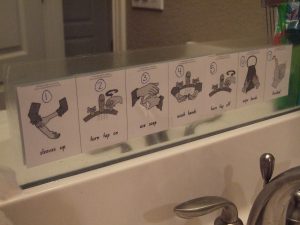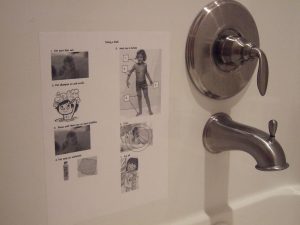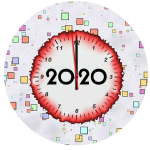By Haley Villines
Teaching kids to be independent is one of the hardest parts of our jobs as parents. We want our children to grow and learn, but there’s always that small part of us that wants them to stay little forever. There is the joy of not having to wipe their noses and there is the worry of watching them head off into their kindergarten class for the first time.
I work in an elementary school. It’s a fascinating place to watch interactions between parents and children. In my 12 years in public education, I’ve come to believe that there are 4 main types of parent-child relationships:
- “I’m too consumed with myself to worry about my child.”
- “I’m your buddy and I don’t want to be uncool.”
- “Test the waters and see what happens, but make smart choices.”
- “I’ll do it for you so you won’t have to.”
Since you’re reading this article, you probably don’t fall in category one. If you’re in category two, I’d urge you to rethink that position. If you’re in category three, I offer a hearty, “You rock, Mama!” If you’re in category four, you’ve come to the right place.
How do you know if you’re in category four? Ask yourself these questions:
- Who carries my child’s backpack?
- Who puts on my child’s shoes?
- Who cleans up my child’s messes?
- Who makes sure my child has his coat, backpack and lunchbox every morning?
If your child is in school and you answered “me” to these questions…read on.
If you’re not teaching independence because you don’t want your child to be independent, that’s between you and your child. However, if you’re not teaching independence because you don’t know how, I’m here to offer a helpful strategy that has worked for me and for many of the parents I work with.
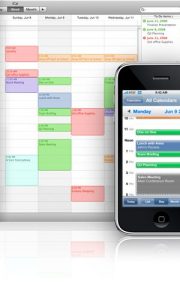 Visual scheduling and visual aids are techniques that speech-language pathologists and special education teachers have been using for many years. It basically goes on the premise that kids need cues to know what to do next until it becomes a habit. Rather than you having to stand over their shoulders and tell them every step to take, you provide them with a map that will take them from depending on you to being independent in a task.
Visual scheduling and visual aids are techniques that speech-language pathologists and special education teachers have been using for many years. It basically goes on the premise that kids need cues to know what to do next until it becomes a habit. Rather than you having to stand over their shoulders and tell them every step to take, you provide them with a map that will take them from depending on you to being independent in a task.
I have used visual schedules with children from ages 2-18 and all across the spectrum of abilities. Actually, I use a visual schedule for myself every day…my iPhone calendar. I’d be lost without it!
Not too long ago, I realized that my kindergartner wasn’t doing a very good job of brushing his teeth. Every morning, I found myself saying over and over, “Have you brushed yet? Are you finished brushing? Why do you have toothpaste all over your face? What’s with the big globs of toothpaste in the sink?” It seems that he was getting distracted by the hilarious faces he was making in the mirror and just couldn’t stay on track to get his teeth brushed!
After a few weeks (okay…months) of frustrating mornings, I finally decided that a picture schedule was in order. I actually found one online and printed it. (www.visualaidsforlearning.com) Those pictures are now stuck to our bathroom mirror with clear Contact paper, where he can’t help but see them when it’s time to brush!
His response? “I love my new pictures! I don’t forget what to do anymore!” He feels a sense of pride at being independent and I feel a sense of relief at not having to nag him about brushing his teeth!
I searched and searched for a good bath schedule, but couldn’t find one I liked, so I made my own with the help of Google Images. I typed out the steps that I wanted him to take, copied and pasted pictures into the document and printed it. It’s stuck to the inside of the bathtub with Contact paper as well. Bath time is much more pleasant these days. Of course, we still double-check to make sure he got clean, but at least he’s not as likely to completely skip a step like rinsing his hair.
You could also use your digital camera to take pictures of your child doing each of the steps in a sequence, but I didn’t think that was really appropriate for bath time. If your child can read, you don’t even need pictures – just write out the words…or have him write out the words and post the sequence where you need it.
I hope that this simple technique will help you and your child discover some new-found independence. If it works, you might just get to enjoy your morning cup of coffee in relative peace.
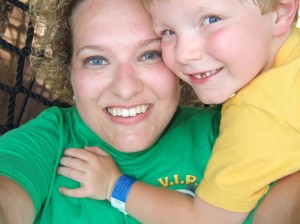 Haley Villines lives in Rogers. She has been married to her husband since 1999 and is proud to be called “Mama” by a 5-year-old boy and a 2-year-old girl. She also works as a public school speech-language pathologist.
Haley Villines lives in Rogers. She has been married to her husband since 1999 and is proud to be called “Mama” by a 5-year-old boy and a 2-year-old girl. She also works as a public school speech-language pathologist.

